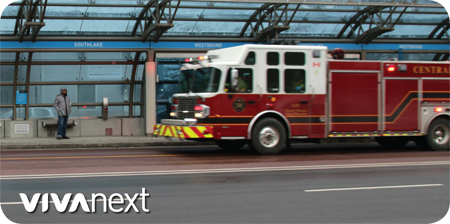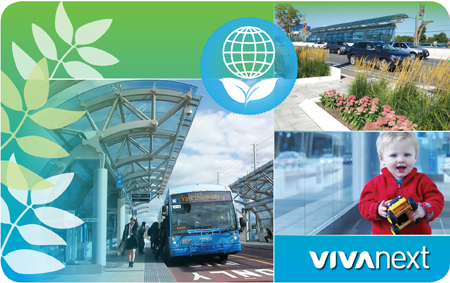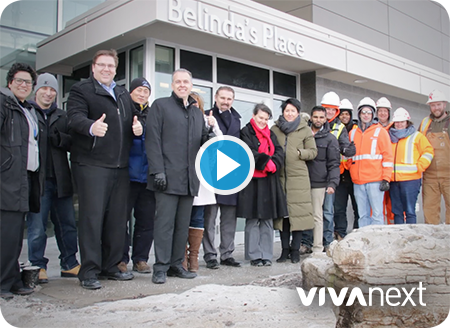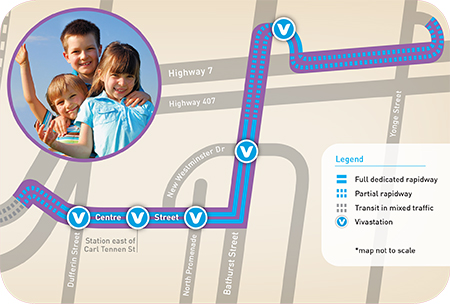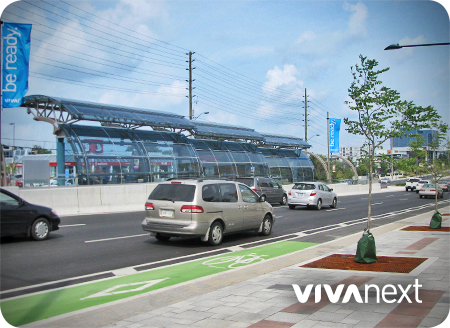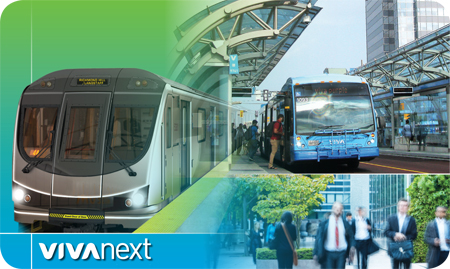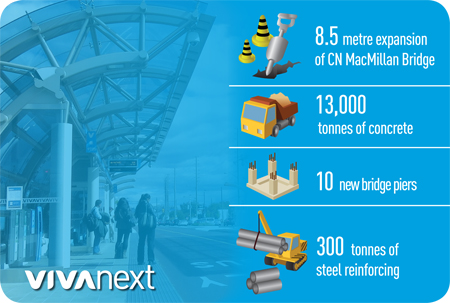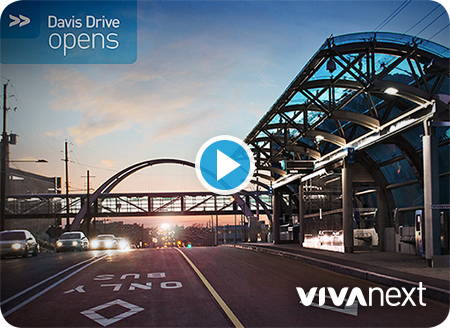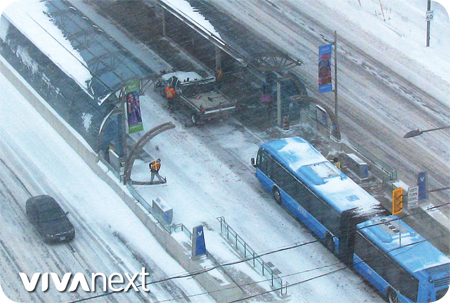We have rapidways open on Highway 7 East, and on Davis Drive, and most people who live and work near these new rapid transit routes know who has access to the rapidways – buses! In fact, the rapidways are paved in red and painted with “bus only” to prevent others from accidentally entering the lanes.
There are a few others who are allowed to drive in the rapidway lanes. Ambulances, fire engines and police cruisers are permitted in an emergency to get past traffic quickly and safely. This is an added benefit that the rapidways bring to each community – saving valuable time when it’s truly needed.
Vehicles such as snow plows and street cleaners maintain the rapidways as needed. Maintenance and security staff from YRT/Viva operations and their contractor, TOK Transit, also access the rapidway stations and their marked vehicles may be seen at the far end of a station platform. This part of the platform is ramped on one side for their use – but this ramp should never be used by regular traffic to cross the rapidway.
Pedestrians and cyclists have access to any vivastation via the traffic signals and crosswalk, but should never jaywalk or cycle across or along rapidway lanes. To do this is risky because it’s unexpected and distracting to both Viva operators and drivers in regular traffic. And although we fully support active and alternative modes of travel, you also can’t travel the rapidway lanes in a scooter or wheelchair, skateboard, motorcycle, hoverboard, segway, golf cart, unicycle… or any other interesting mode of transportation we haven’t thought of yet!
You may wonder why Viva buses use the rapidways, but YRT buses don’t. The reason is that YRT buses either need to turn on and off the road frequently to gather customers, or their purpose is different – e.g., more stops, turning into shopping plazas, etc. Viva and YRT routes are evaluated by YRT/Viva’s Service Planning branch on a regular basis, and service changes are made to routes and schedules as needed.
A street that includes a rapidway is a complete street, with space for doing everything in a safe and efficient way. Hope you get out and enjoy our streets this spring!

